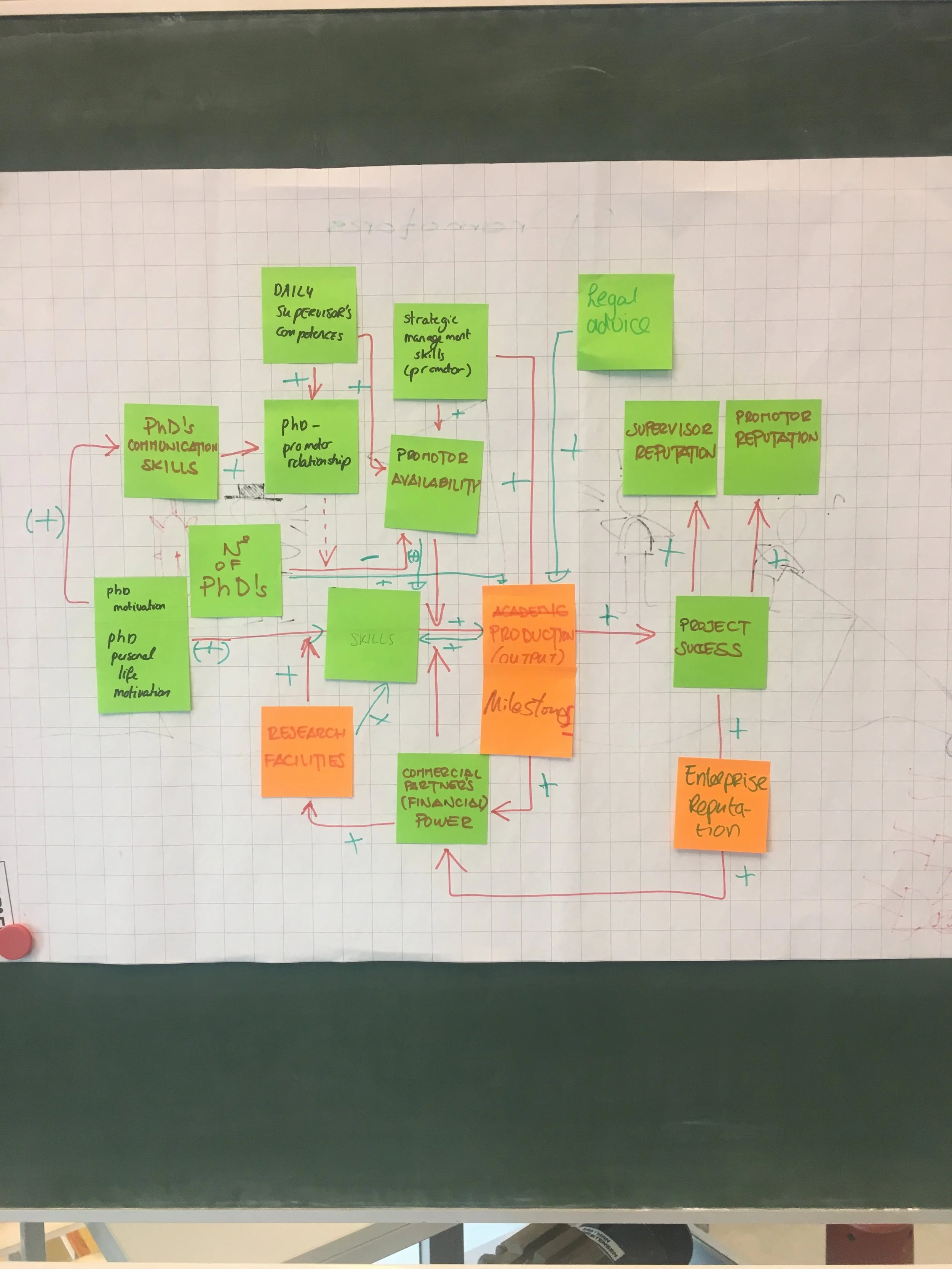On the second day of the Advanced Problem-Solving and Decision-Making course we focused on using Group Model-Building as a strategy to deal with all the stakeholders (e.g., supervisors, possible commercial parties, government bodies etc.) in our PhD projects. Basically we applied systems-thinking to problem-solving in a multi-stakeholder context.
We enacted a situation in which we had to agree as to what the problem was by building a model that represented the problem. This also gave some insights into how different elements that make up the problem were connected and which parties could intervene in solving the problem. While I would not apply the method directly, it gave me new insights into new ways to build consensus.
Last week I also promised to reflect on whether using unconscious thought as a decision-making technique worked for me. I would say that the exercise worked more or less. While I tried to put aside the problem during the weekend, the problem/question that I applied this technique to is something that I am working on every week. The “eureka” moment, which is supposed to happen based on your unconscious mind still being occupied with the problem, was more about how to approach the problem differently rather than which paths I was considering was best. This means that I am currently analysing the data that I already had from previous papers and I and dissecting what the statements are about. A concrete example: I have gathered some data from literature in which different authors state what their vision is on the role of designers or describe how the role of designers has been evolving over the last years. While I categorised this data according to design roles (e.g., designers fulfilling what I called functional, coordinating or strategic roles) I am now revisiting the statements again and I am looking more closely at how the authors name the roles, what they say about when the described designers is involved in the design process and what the associated tasks are (if described at all). This can help in broadening the scope and classifying designers in different ways. In addition to classifying designers according to the distinctive role described in literature I looked at clustering designers according to:
the level of design expertise (see: Lawson and Dorst, 2013);
the function profile they are working in (e.g., industrial-designers-turned-entrepreneur or industrial-designers-in-companies);
the six design roles described in “Six decades - and six different roles for he industrial designers’ Valtonen (2005);
according to the ‘level of design’, which can range from product design to systems design.
the way they use design (e.g., to create objects or to engage/empower end-users etc.)
As the final aim of my PhD is to extract design competencies for a circular economy from practice and informing (traditional) design education regarding, I think it’s relevant to find a relevant way of clustering designers. While I knew that each way of clustering had its pros and cons, now that I had some chance to look into it a bit more, define categories and build personas, I able to explicate them better. Looking forward to have some interesting discussions about this topic.
Next, week more on the outcomes of these discussion and more focus on competencies, capabilities and skills (there seems to be a lack of consensus about what these terms mean and how they differ….).

